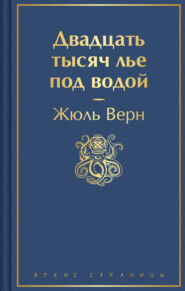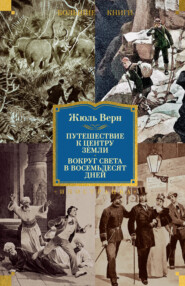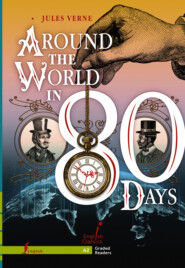По всем вопросам обращайтесь на: info@litportal.ru
(©) 2003-2024.
✖
Celebrated Travels and Travellers, Part 3. The Great Explorers of the Nineteenth Century
Настройки чтения
Размер шрифта
Высота строк
Поля
Seetzen, with his insatiable thirst for discovery, could not remain long in repose, far removed from idleness though it was. In April, 1809, he finally left the capital of Egypt, and directed his course towards Suez and the peninsula of Sinai, which he resolved to explore before proceeding to Arabia. At this time Arabia was a little-known country, frequented only by merchants trading in Mocha coffee-beans. Before Niebuhr's time no scientific expedition for the study of the geography of the country or the manners and customs of the inhabitants had been organized.
This expedition owed its formation to Professor Michälis, who was anxious to obtain information which would throw light on certain passages in the Bible, and its expenses were defrayed by the generosity of King Frederick V. of Denmark. It comprised Von Hannen, the mathematician, Forskaal, the naturalist, a physician named Cramer, Braurenfeind, the painter, and Niebuhr, the engineer, a company of learned and scientific men, who thoroughly fulfilled all expectations founded upon their reputations.
In the course of two years, from 1762 to 1764, they visited Egypt, Mount Sinai, Jeddah, landed at Loheia, and advancing into Arabia Felix, explored the country in accordance with the speciality of each man. But the enterprising travellers succumbed to illness and fatigue, and Niebuhr alone survived to utilize the observations made by himself and his companions. His work on the subject is an inexhaustible treasury, which may be drawn upon in our own day with advantage.
Seetzen, therefore, had much to achieve to eclipse the fame of his predecessor. He omitted no means of doing so. After publicly professing the faith of Islam, he embarked at Suez for Mecca, and hoped to enter that city disguised as a pilgrim. Tor and Jeddah were the places visited by him before he travelled to the holy city of Mecca. He was much impressed by the wealth of the faithful and the peculiar characteristics of that city, which lives for and by the Mahometan cultus. "I was seized," says the traveller, "with an emotion which I have never experienced elsewhere."
It is alike unnecessary to dwell upon this portion of the voyage and upon that relating to the excursion to Medina. Burckhardt's narrative gives a precise and trustworthy account of those holy places, and besides, there remain of Seetzen's works only the extracts published in "Les Annales des Voyages," and in the Correspondence of the Baron de Zach. The Journal of Seetzen's travels was published in German, and in a very incomplete manner, only in 1858.
The traveller returned from Medina to Mecca, and devoted himself to a secret study of the town, with its religious ceremonies, and to taking astronomical observations, which determined the position of the capital of Islam.
Seetzen returned to Jeddah on the 23rd March, 1810. He then re-embarked, with the Arab who had been his guide to Mecca, for Hodeidah, which is one of the principal ports of Yemen. Passing the mountainous district of Beith-el-Fakih, where coffee is cultivated, after a month's delay at Doran on account of illness, Seetzen entered Sana, the capital of Yemen, which he calls the most beautiful city of the East, on the 2nd of June. Upon the 22nd of July he reached Aden, and in November he was at Mecca, whence the last letters received from him are dated. Upon re-entering Yemen, he, like Niebuhr, was robbed of his collections and baggage, upon the pretext that he collected animals, in order to compose a philtre, with the intention of poisoning the springs.
Seetzen, however, would not quietly submit to be robbed. He started at once for Sana, intending to lay a complaint before the Iman. This was in December, 1811. A few days later news of his sudden death arrived at Taes, and the tidings soon reached the ears of the Europeans who frequented the Arabian ports.
It is little to the purpose now to inquire upon whom the responsibility of this death rests – whether upon the Iman or upon those who had plundered the traveller – but we may well regret that so thorough an explorer, already familiar with the habits and customs of the Arabs, was unable to continue his explorations, and that the greater portion of his diaries and observations have been entirely lost.
"Seetzen," says M. Vivien de Saint Martin, "was the first traveller since Ludovico Barthema (1503) who visited Mecca, and before his time no European had even seen the holy city of Medina, consecrated by the tomb of the Prophet."
From these remarks we gather how invaluable the trustworthy narrative of this disinterested and well-informed traveller would have been.
Just as an untimely death ended Seetzen's self-imposed mission, Burckhardt set out upon a similar enterprise, and like him commenced his long and minute exploration of Arabia by preliminary travel through Syria.
"It is seldom in the history of science," says M. Vivien de Saint Martin, "that we see two men of such merit succeed each other in the same career or rather continue it; for in reality Burckhardt followed up the traces Seetzen had opened out, and, seconded for a considerable time by favourable circumstances which enabled him to prosecute his explorations, he was enabled to add very considerably to the known discoveries of his predecessor."
Although John Lewis Burckhardt was not English, for he was a native of Lausanne, he must none the less be classed among the travellers of Great Britain. It was owing to his relations with Sir Joseph Banks, the naturalist who had accompanied Cook, and Hamilton, the secretary of the African Association, who gave him ready and valuable support, that Burckhardt was enabled to accomplish what he did.
Burckhardt was a deeply learned man. He had passed through the universities of Leipzic, and Göttingen, where he attended Blumenbach's lectures, and afterwards through Cambridge, where he studied Arabic. He started for the East in 1809. To inure himself to the hardships of a traveller's life, he imposed long fasts upon himself, accustomed himself to endure thirst, and chose the pavements of London or dusty roads for a resting-place. But how trifling were these experiences in comparison with those involved in an apostolate of science!
Leaving London for Syria, where he hoped to perfect his knowledge of Arabic, Burckhardt intended to proceed to Cairo and to reach Fezzan by the route formerly opened up by Hornemann. Once arrived in that country, circumstances must determine his future course.
Burckhardt, having taken the name of Ibrahim-Ibn-Abdallah, intended to pass as an Indian Mussulman. In order to carry out this disguise, he had recourse to many expedients. In an obituary notice of him in the "Annales des Voyages," it is related that when unexpectedly called upon to speak the Indian language, he immediately had recourse to German. An Italian dragoman, suspecting him of being a giaour, pulled him by his beard, thereby offering him the greatest insult possible in his character of Mussulman. But Burckhardt had so thoroughly entered into the spirit of his rôle, that he responded by a vigorous blow, which sending the unfortunate dragoman spinning to a distance, turned the laugh against him, and thoroughly convinced the bystanders of the sincerity of the traveller.
Burckhardt remained at Aleppo from September, 1809, to February, 1812, pursuing his studies of Syrian manners and customs, and of the language of the country, with but one interruption, a six months' excursion to Damascus, Palmyra, and the Hauran, a country which had hitherto been visited by Seetzen only.
It is related that, during an excursion into Gor, a district north of Aleppo, upon the shores of the Euphrates, the traveller was robbed of his baggage and stripped of his clothes by a band of robbers. When nothing remained to him but his trousers, the wife of a chief, who had not received her share of the spoil, wished to relieve him even of those indispensable garments!
The Revue Germanique says: – "We owe a great deal of information to these excursions, respecting a country of which we had only crude notions, gained from Seetzen's incomplete communications. Burckhardt's power of close observation detected a number of interesting facts, even in well-known districts, which had escaped the notice of other travellers. These materials were published by Colonel Martin William Leake, himself a geographer, a man of learning, and a distinguished traveller."
Burckhardt had seen Palmyra and Baalbek, the slopes of Lebanon and the valley of the Orontes, Lake Huleh, and the sources of the Jordan; he had discovered many ancient sites; and his observations had led especially to the discovery of the site of the far-famed Apamoea, although both he and his publisher were mistaken in their application of the data obtained. His excursions in the Auranitis were equally rich, even though coming after Seetzen's, in those geographical and archæological details which represent the actual condition of a country, and throw a light upon the comparative geography of every age.
Leaving Damascus in 1813, Burckhardt visited the Dead Sea, the valley of Akâba, and the ancient port of Azcongater, districts which in our own day are traversed by parties of English, with their Murray, Cook, or Bædeker in their hands; but which then were only to be visited at the risk of life. In a lateral valley, the traveller came upon the ruins of Petra, the ancient capital of Arabia Petræa.
At the end of the year Burckhardt was at Cairo. Judging it best not to join the caravan which was just starting for Fezzan, he felt a great inclination to visit Nubia, a country rich in attractions for the historian, geographer, and archæologist. Nubia, the cradle of Egyptian civilization, had only been visited, since the days of the Portuguese Alvares, by Poncet and Lenoir Duroule, both Frenchmen, at the close of the seventeenth century, at the opening of the eighteenth by Bruce, whose narrative had so often been doubted, and by Norden, who had not penetrated beyond Derr.
In 1813 Burckhardt explored Nubia proper, including Mahass and Kemijour. This expedition cost him only forty-two francs, a very paltry sum in comparison with the price involved in the smallest attempt at an African journey in our own day; but we must not forget that Burckhardt was content to live upon millet-seed, and that his entire cortége consisted of two dromedaries.
Two Englishmen, Mr. Legh and Mr. Smelt, were travelling in the country at the same time, scattering gold and presents as they passed, and thus rendering the visits of their successors costly.
Burckhardt crossed the cataracts of the Nile. "A little farther on," says the narrative, "near a place called Djebel-Lamoule, the Arab guides practise a curious extortion." This is their plan of proceeding. They halt, descend from their camels, and arrange a little heap of sand and pebbles, in imitation of a Nubian tomb. This they, call "preparing the grave for the traveller" and follow up the demonstration by an imperious demand for money. Burckhardt having watched his guide commence this operation, began quietly to imitate him, and then said, "Here is thy grave; as we are brothers, it is but fair that we should be buried together." The Arab could not help laughing, both graves were simultaneously destroyed, and remounting the camels, the cavalcade proceeded, better friends than before. The Arab quoted a saying from the Koran: "No human being knows in what spot of the earth he will find his grave."
Burckhardt had hoped to get as far as Dingola, but was obliged to rest satisfied with collecting information about the country and the Mamelukes, who had taken refuge there after the massacre of their army by order of the viceroy of Egypt.
The attention of the traveller was frequently directed to the ruins of temples and ancient cities, than which none are more curious than those of Isambul.
"The temple on the banks of the Nile is approached by an avenue flanked by six colossal figures, which measure six feet and a half from the ground to the knees. They are representations of Isis and Osiris, in various attitudes. The sides and capitals of the pillars are covered with paintings or hieroglyphic carvings, in which Burckhardt thought a very ancient style was to be traced. All these are hewn out of the rock, and the faces appear to have been painted yellow, with black hair. Two hundred yards from this temple are the ruins of a still larger monument, consisting of four enormous figures, so deeply buried in the sand that it is impossible to say whether they are in a standing or sitting posture."
These descriptions of antiquities, which in our own day are accurately known by drawings and photographs, have, however, little value for us; and are merely interesting as indicating the state of the ruins when Burckhardt visited them, and enabling us to judge how far the depredations of the Arabs have since changed them.
Burckhardt's first excursion was limited to the borders of the Nile, a narrow space made up of little valleys, which debouched into the river. The traveller estimated the population of the country at 100,000, distributed over a surface of fertile land 450 miles in length, by a quarter of a mile in width.
"The men," says the narrative, "are, as a rule, muscular, rather shorter than the Egyptians, having little beard or moustache, usually merely a pointed beard under the chin. They have a pleasant expression, are superior to the Egyptians in courage and intelligence, and naturally inquisitive. They are not thieves. They occasionally pick up a fortune by dint of hard work, but they have little enterprise. Women share the same physical advantages, are pretty as a rule, and well made; their appearance is gentle and pleasing, and they are modest in behaviour. M. Denon has underrated the Nubians, but it must not be forgotten that their physique varies in different districts. Where there is much land to cultivate, they are well developed; but in districts where arable land is a mere strip, the people diminish in vigour, and are sometimes walking skeletons."
The whole country groaned under the yoke of the Kashefs, who were descendants of the commander of the Bosniacs, and paid only a small annual tribute to Egypt, which, however, was sufficient to serve as a pretext for oppressing the unfortunate fellaheen. Burckhardt cites a curious example of the insolence with which the Kashefs behaved.
"Hassan Kashef," he says, was in need of barley for his horses. Accompanied by his slaves, he walked into the fields, and there met the owner of a fine plot of barley. "How badly you cultivate your land," said he. "Here you plant barley in a field where you might have reaped an excellent crop of water-melons of double the value. See, here are some melon-seeds (offering a handful to the peasant proprietor); sow your field with these; and you, slaves, tear up this bad barley and bring it to me."
In March, 1814, after a short rest, Burckhardt undertook a fresh exploration, not this time of the banks of the Nile, but of the Nubian desert. Justly conceiving poverty to be his surest safe guard, he dismissed his servant, sold his camel, and contenting himself with one ass, joined a caravan of poor traders. The caravan started from Daraou, a village inhabited partly by fellahs and partly by Ababdéh Arabs. The traveller had good reason to complain of the former, not because they recognized him as a European, but because they imagined him to be a Syrian Turk, come to share the commerce in slaves of which they had the monopoly.
It would be useless to enumerate the names of the bridges, hills, and valleys in this desert. We will rather summarize the traveller's report of the physical aspect of the country.
Bruce, who had explored it, paints it in too gloomy colours, and exaggerates the difficulties of the route. If Burckhardt is to be credited, the country is less barren than that between Aleppo and Bagdad, or Damascus and Medina. The Nubian desert is not merely a plain of sand, where nothing interrupts the dreary monotony. It is interspersed with rocks, some not less than 300 feet in height, and shaded by thickets of acacias or date-trees. The shelter of these trees is, however, unavailing against the vertical rays of the sun, which explains an Arabic proverb, "Rely upon the favour of the great and the shade of an acacia."
At Ankheyre, or Wady-Berber, the caravan reached the Nile, after passing Shigre, one of the best mountain springs. One danger only is to be feared in crossing the desert; that of finding the wells at Nedjeym dry; and, unless the traveller should lose his way, which, however, with trustworthy guides, is little likely to happen, no serious obstacle arises.
It would appear, therefore, that the sufferings experienced by Bruce must have been greatly exaggerated, although the narrative of the Scotch traveller is generally trustworthy. The natives of the province of Berber appear to be identical with the Barbarins of Bruce, the Barabas mentioned by D'Anville, and the Barauras spoken of by Poncet. They are a well-made race, and different in feature from the negroes. They maintain their purity of descent by marrying only with the women of their own or of kindred tribes. Curious as is the picture Burckhardt draws of the character and manners of this tribe, it is not at all edifying. It would be difficult to convey an idea of the corruption and degradation of the Berbers. The little town of Wady-Berber, a commercial centre, the rendezvous for caravans, and a depôt for slaves, is a regular resort of banditti.
Burckhardt, who had trusted to the protection of the merchants of Daraou, found that he had made a great mistake in so doing. They sought every means of plundering him, chased him out of their company, and forced him to seek refuge with the guides and donkey-drivers, who cordially welcomed him.
Upon the 10th of April a fine was levied upon the caravan by the Mek of Damer, which lies a little south of the tributary Mogren (called Mareb by Bruce). This is a well-kept and cleanly Fakir village, which contrasts agreeably with the ruins and filth of Berber. The Fakirs give themselves up to the practices of sorcery, magic, and charlatanism. One of them, it is said, could even make a lamb bleat in the stomach of the man who had stolen and eaten it! These ignorant people have entire faith in such fables, and it must be reluctantly admitted that the fact contributes not a little to the peace of the town and the prosperity of the country.
From Damer, Burckhardt proceeded to Shendy, where he passed a month, during which time no one suspected him to be an infidel. Shendy had grown in importance since Bruce's visit, and now consisted of about a thousand houses. Considerable trade was carried on – grass, slaves, and cattle taking the place of specie. The principal marketable commodities were gum, ivory, gold, and ostrich feathers.
According to Burckhardt, the number of slaves sold yearly at Shendy amounts to 5000; 2500 of these are for Arabia, 400 for Egypt, 1000 for Dongola and the districts of the Red Sea.
The traveller employed his time during his stay at Sennaar in collecting information about that kingdom. Amongst other curious things, he was told that the king having one day invited the ambassador of Mehemet Ali to a cavalry review, which he considered rather formidable, the envoy in his turn begged the king to witness part of the Turkish artillery exercises. But at the outset of the performance – at the discharge of two small mounted guns – cavalry, infantry, spectators, courtiers, and the king himself, fled in terror.
Burckhardt sold his wares, and then, worn out by the persecutions of the Egyptian merchants who were his companions, he joined the caravan at Suakin, intending to traverse the unknown district between that town and Shendy. From Suakin he meant to set out for Mecca, hoping to find the Hadji useful to him in the realization of his projects.
"The Hadji," he says, "form one powerful body, and every member is protected, because if one is attacked the whole number take up arms." The caravan which Burckhardt now joined consisted of 150 merchants and 300 slaves. Two hundred camels were employed to convey heavy bales of "danmour," a stuff manufactured in Sennaar, and cargoes of tobacco.
The first object of interest to the travellers was the Atbara, a tributary of the Nile, whose banks, with their verdant trees, were grateful to the eye after the sandy desert. The course of the river was followed as far as the fertile district of Taka. During the journey the white skin of the pretended sheik Ibrahim (it will be remembered that this was the name assumed by Burckhardt) attracted much attention from the female population, who were little accustomed to the sight of Arabs.
"One day," relates the traveller, "a girl of the country, of whom I had been buying onions, offered to give me an extra quantity if I would remove my turban, and show her my head. I demanded eight more onions, which she immediately produced. As I removed my turban, and exposed my white and close-shaven head to view, she sprang back in horror and dismay. I asked her jokingly if she would not like a husband with a similar head, to which she replied with much energy, and many expressions of disgust, that she would prefer the ugliest slave ever brought from Darfur."
Just before Goz Radjeh was reached, Burckhardt's attention was attracted to a building, which he was told was either a church or temple, the same word having the two meanings. He at once proceeded in that direction, hoping to examine it, but his companions stopped him, saying, "It is surrounded by bands of robbers; you cannot go a hundred steps without danger of attack."
Burckhardt was unable to decide whether it was an Egyptian temple, or a monument of the empire of Axum.

















